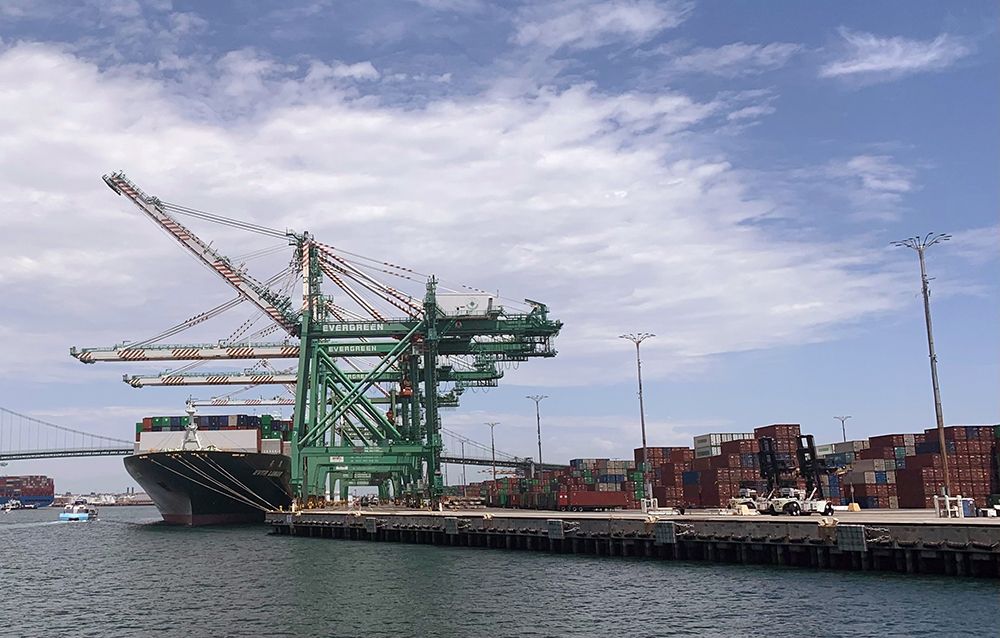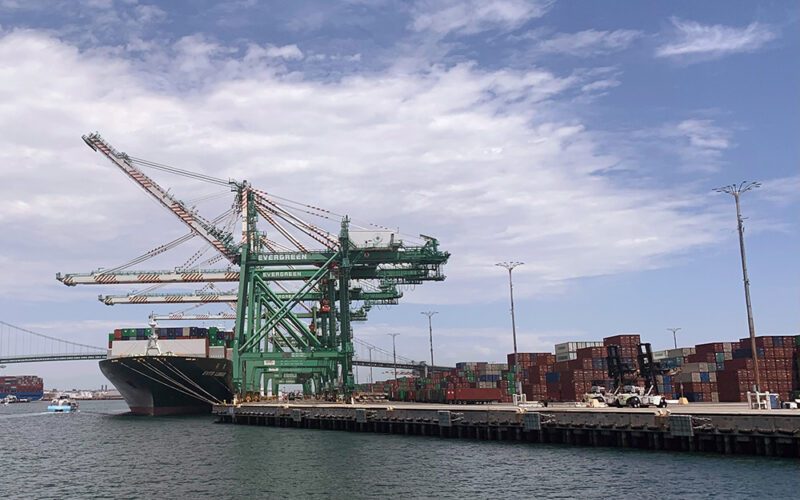
A new study prepared by Washington, DC-based economic consulting firm BST Associates concludes that California has evolved into a distribution center for U.S. trade with Pacific Rim nations partly because of its geographic location, but also because such a large portion of the trade is consumed locally.
Port directors from across California shared the study with state policymakers on Feb. 15 for Ports Day 2023, annual day of advocacy by the California Association of Port Authorities (CAPA). They were joined by dozens of state policymakers to highlight the impact California ports have on driving the economy forward.
“Each year, California ports are moving billions of dollars in trade revenue, creating millions of good paying jobs and connecting our nation to invaluable resources across the globe,” CAPA President and Port of Oakland Executive Director Danny Wan said.
“Our state must continue to prioritize investments in infrastructure across the California supply chain to help this vital economic ecosystem thrive,” he added.
The analysis is based on trade data for calendar year 2020. The study’s notable findings include:
- In 2020, the amount of waterborne trade moving through California ports was worth $416 billion.
- An estimated 3.1 million jobs are supported by the trade, including more than 800,000 jobs related to exports and nearly 2.3 million jobs related to imports.
- The jobs supported by the waterborne trade moving through California ports generate worker income estimated to total nearly $134 billion, including $42.2 billion related to exports and $91.8 billion related to imports.
- The trade generated an estimated $38.1 billion in tax revenue, with impacts spread throughout the country.
- The study is part of a series that has been produced by BST Associates since 1995.
The 11 major commercial ports that comprise the Association of Port Authorities handle 38% of all containerized imports and 28% of all exports in the U.S, reaching every corner of the country, according to CAPA.
California is home to the two largest, busiest container ports in North America, the Port of Los Angeles and Port of Long Beach. The Port of Oakland is the state’s third-largest port in terms of container volumes and one of the five-busiest seaports in the U.S.
In addition, there are eight smaller ports throughout the state, including:
- The Port of San Diego, which manages 34 miles of waterfront and oversees two maritime cargo terminals, a cruise ship terminal, 17 public parks, various wildlife reserves and environmental initiatives, a Harbor Police department and the leases of more than 600 tenant and sub-tenant businesses around the San Diego Bay.
- The Port of San Francisco, which manages 7.5 miles of waterfront that’s home to not just industrial maritime, but also popular destinations and attractions, historic districts and small businesses.
- The Port of Hueneme, which is the only deep water harbor between Los Angeles and the San Francisco Bay area and is the U.S. Port of Entry for California’s central coast region. The niche markets is serves include the import and export of automobiles, fresh fruit and produce.
- The Port of West Sacramento, a bulk-commodity port specializing in the import and export of bulk agricultural- and construction-related products. The port has more than 480 acres of maritime properties and 700,000 square feet of enclosed storage.
- The Port of Redwood City, which is located 18 nautical miles south of San Francisco and is the only deepwater port in the south San Francisco Bay. It specializes in bulk, neo-bulk and liquid cargoes.
- The Port of Richmond, which ranks first in liquid bulk and automobile tonnage among ports on San Francisco Bay. It has roots in petroleum and liquid bulk cargos, but has expanded its dry bulk, break-bulk, and containerized cargo handling capabilities.
- The Port of Humboldt Bay, located about 225 miles north of San Francisco and 156 nautical miles south of Coos Bay, Ore. About 15% of Humboldt Bay’s 33 miles of shoreline is considered appropriate for harbor facility development, port officials have said.
- The Port of Stockton, a 35-foot deep-water port with more than 2,000 acres for import/export cargoes such as containers, steel, wind energy, ro/ro and heavy lift/project cargo, as well as warehousing, refrigeration, cold storage and distribution centers.
The California Association of Port Authorities, which was founded in 1940, has a mission to educate state and federal policy makers on port operations while also advancing the best interests of the maritime community.
In addition, CAPA maintains formal agreements with the Federal Maritime Commission on behalf of its member ports and provides regular communications with the FMC and other national interests.

